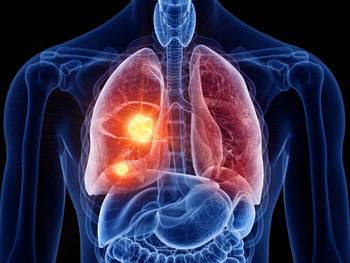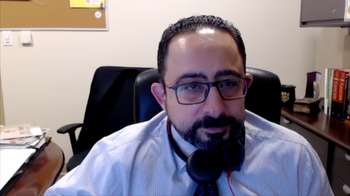
- ONCOLOGY Vol 20 No 14
- Volume 20
- Issue 14
After Cancer Treatment: Heal Faster, Better, Stronger
This comprehensive guidebook is an invaluable reference for patients and health professionals as they navigate the murky waters of cancer treatment and survivorship. While several other books address only specific aspects of living with cancer and its aftermath, Silver's reference covers all aspects of life during and after cancer, touching on issues that range from pain management to responding to children's questions about cancer such as, "Are you going to die?"
Author: Julie K. Silver, MD
Publisher: The Johns Hopkins University Press, Baltimore
288 pages
Price: $16.95
Reviewed by
STEPHANIE ROSS, PhD
Assistant Professor
Department of Psychiatry and Behavioral Sciences
Northwestern University Feinberg School of Medicine
Chicago, Illinois
This comprehensive guidebook is an invaluable reference for patients and health professionals as they navigate the murky waters of cancer treatment and survivorship. While several other books address only specific aspects of living with cancer and its aftermath, Silver's reference covers all aspects of life during and after cancer, touching on issues that range from pain management to responding to children's questions about cancer such as, "Are you going to die?" Silver's work integrates an exhaustive review of clinical research and self-help materials on survivorship with her combined personal and professional viewpoints. Silver's expertise as a physiatrist specializing in cancer rehabilitation, her own experience with cancer, and her wisdom as a mother, wife, and professional colleague provide her with an invaluable perspective in relaying advice to fellow survivors. Due to the paucity of research regarding other cancer sites, much of the cited studies and clinical examples in the book pertain to breast cancer. However, the information applies to and should appeal to a wide audience of patients, survivors, family members, and health-care professionals.
Silver's central thesis is that proper diet, rest, and exercise are the three critical factors in the healing process, and in many ways, the book reads as an explicit how-to manual for achieving these goals. Through poignant examples and personal insights, the author goes beyond simply directing patientsshe also demonstrates that she understands the persistent physical and emotional concerns that extend beyond the cancer treatment period. This is critically important and certain to engage the posttreatment reader, who, in many cases may feel marginalized by others who simply view them as "cured."
In each chapter, the author allows readers to consider a range of optionsfrom self-help strategies to more intensive interventionsto address issues such as combating fatigue, safely engaging in exercise, or dealing with mental health issues. One of the most appealing features of the book is how Silver visually breaks down complex information into easily discernible text boxes that are useful as a quick reference. Tables throughout the book display clear and concrete information, which may be of particular help to patients in determining whether their symptoms warrant professional attention.
Silver gently guides patients in the never-ending quest to determine whether symptoms are expected, unreasonable, or unnecessary by using quality of life as a benchmark. She simply and thoroughly guides patients as to when to appropriately seek their oncologist's or primary care physician's help in addressing physical
and/or emotional concerns. She demonstrates how patients can effectively advocate for themselves with their physicians and also how to find additional experts who might effectively handle their rehabilitation needs. Throughout the book, she recommends that patients seek out health-care providers who have comprehensive experience with cancer patients and their unique needs both during and after treatment.
Silver's emphasis on health-care providers such as dietitians, physical therapists, compounding pharmacists, mental health professionals, and massage therapists who have expertise in and a thorough understanding of cancer will empower patients to seek the help they need and remind physicians that these experts do exist as resources. Through her clinical examples of collaborative models of care, Silver shows how simply linking the patient with appropriate resources can dramatically decrease patient, family, and physician frustration, thus leading to overall better care. Likewise, Silver appropriately warns patients of the various well-intentioned health professionals who may provide advice outside their realm of expertisesometimes at the expense of patient health.
Each chapter details options that can and should appeal to just about any patient at any stage of treatment. The chapter on exercise is among the most helpful in the book, and thoughtful chapters on nutrition, relationships, and setting priorities provide explicit, commonsense advice. Even the chapter on spirituality offers practical advice regarding prayer and meditation. While some readers may find a section of spirituality uncomfortable or out of place in a medical reference (Silver herself comments about her hesitation in including this chapter), the only real danger of including this information is that it may inadvertently add to the "blame the victim" phenomenon, whereby patients who are not "sprititual" may feel they are contributing to the progression of their disease. Similarly, the chapter stressing the importance of intimate relationships and support networks in successful recovery may have the same unintended effect among patients lacking these relationships.
In the chapter on mood management, she discusses how physical factors such as hormones, medications, and chemical imbalances can negatively affect emotions. In doing so she essentially normalizes patients' experiences by offering an alternative, biologic explanation for symptoms often thought to be excessive or mistakenly viewed as attributable to poor attitude or signs of weakness.
The most disappointing section of the book was the brief section on smoking, which was not comprehensive enough, failed to account for evidence-based research in this area, and did not offer nearly the number of resources available for patients. Compared to the sections covering diet and other health behaviors, this section was particularly dissatisfying, given the crucial role that smoking cessation plays in reducing cancer recurrence, improving overall health, and preventing the development of secondary cancers. The resource section in the appendix, while generally very thorough and inclusive, also failed to include smoking cessation resources.
Overall, Silver's numerous thoughtful suggestions are a valuable addition to the growing survivorship literature. Through her own experience and well-chosen vignettes, she provides readers with an honest but ultimately hopeful picture of the treatment and recovery process. With the publication of this book, patients and their families now have a clearer recovery roadmap to follow. Furthermore, the information contained in the book should help patients initiate more effective discussions with their physicians and facilitate access to the specialized rehabilitative services implemented in cancer care over the past several years. Silver's gentle urging of patients to consult their physicians regarding quality-of-life impairments models ways in which to think beyond recurrence and more along the lines of improving general health. This will certainly become an increasingly important practice issue as patients survive longer.
Stephanie Ross, PHD
Articles in this issue
almost 19 years ago
Considerations and Treatment Options in Colorectal Canceralmost 19 years ago
Sifting Through the Multitude of Novel Therapies for Prostate Canceralmost 19 years ago
‘Contemplation’almost 19 years ago
HER2-Positive Breast Cancer: Remaining Challengesalmost 19 years ago
Chemotherapy Drug Stops Cancer Growth in Advanced Thyroid Cancer Patientsalmost 19 years ago
Novel Therapies in the Honeymoon PeriodNewsletter
Stay up to date on recent advances in the multidisciplinary approach to cancer.


















































































